All photos used in this post credited to John Murray – PNJ photography www.pnjphotography.com
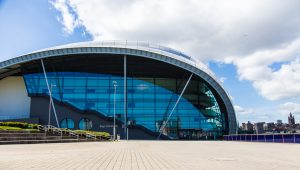 The iconic Sage Gateshead concert venue was the setting for the Society of British Neurological Surgeons (SBNS) Spring Meeting. SBNS meetings last for three days and are hosted biannually in a different city each time. As a medical student at the Hull York Medical School (HYMS), the last meeting was on my doorstep. This year, I travelled to Gateshead for SBNS Newcastle 2016, held April 20-22, to learn about neurosurgical innovation and the wider neurosurgical community.
The iconic Sage Gateshead concert venue was the setting for the Society of British Neurological Surgeons (SBNS) Spring Meeting. SBNS meetings last for three days and are hosted biannually in a different city each time. As a medical student at the Hull York Medical School (HYMS), the last meeting was on my doorstep. This year, I travelled to Gateshead for SBNS Newcastle 2016, held April 20-22, to learn about neurosurgical innovation and the wider neurosurgical community.
Neuropods: a new breed of neurosurgeon
Neurosurgeons aren’t just brain surgeons. They deal with a number of disorders of the central and peripheral nervous system. This has resulted in many neurosurgeons specialising solely on the spine. ‘Brain surgery’ is often glamorised in the media and in popular television dramas, but spinal surgery presents a new range of challenges; it can be life saving, has the potential to transform a patient’s quality of life through pain relief and helps some people to walk again. At SBNS Newcastle, the spotlight was on the spine.
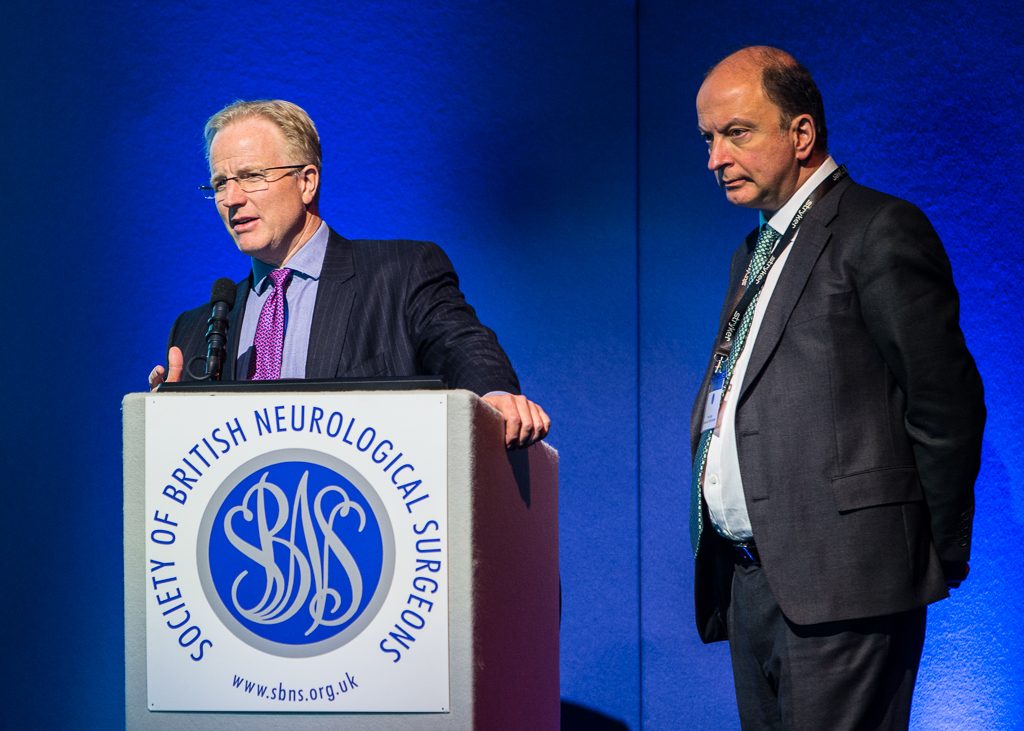 During the life-long-learning session that always kicks off the conference, Mr Kia Rezajooi, Consultant Neurosurgeon at The Royal National Orthopaedic Hospital (RNOH Stanmore), introduced himself as a ‘neuropod’. This mirrors the classic slang term for Orthopaedic surgeon – ‘orthopod’. Orthopaedic surgeons also specialise in spinal surgery and often contribute to the spinal sections of the neurosurgical conference. Understandably, this leads to a great deal of interspecialty humour and comradery. Mr Rezajooi explained that a neuropod is someone who ideally has the qualities of a neurosurgeon combined with those of an orthopaedic surgeon. To illustrate neurosurgical skill he showed us a picture of a meerkat, explaining how they like to keep things ‘simples’ (the Chris Adams ‘KISS’ principle: keep it simple and safe) and can perform delicate movements with their hands. To illustrate orthopaedic prowess, he switched slides to a photo of a rhinoceros (thick-skinned, horny, and charges a lot), much to the amusement of the audience.
During the life-long-learning session that always kicks off the conference, Mr Kia Rezajooi, Consultant Neurosurgeon at The Royal National Orthopaedic Hospital (RNOH Stanmore), introduced himself as a ‘neuropod’. This mirrors the classic slang term for Orthopaedic surgeon – ‘orthopod’. Orthopaedic surgeons also specialise in spinal surgery and often contribute to the spinal sections of the neurosurgical conference. Understandably, this leads to a great deal of interspecialty humour and comradery. Mr Rezajooi explained that a neuropod is someone who ideally has the qualities of a neurosurgeon combined with those of an orthopaedic surgeon. To illustrate neurosurgical skill he showed us a picture of a meerkat, explaining how they like to keep things ‘simples’ (the Chris Adams ‘KISS’ principle: keep it simple and safe) and can perform delicate movements with their hands. To illustrate orthopaedic prowess, he switched slides to a photo of a rhinoceros (thick-skinned, horny, and charges a lot), much to the amusement of the audience.
On a more serious note, Mr Rezajooi expressed his appreciation of working alongside his orthopaedic colleagues. Working collaboratively in multi-consultant teams, and sharing ideas and methods can be beneficial. For example, he explained that the orthopaedic surgeons at his hospital promote the use of transparent drapes in the operating theatre for better visualisation during certain spinal procedures. Mr Rezajooi’s colleagues from RNOH Stanmore – Mr Adrian Casey, Consultant Neurosurgeon, and Mr Sean Malloy, Consultant Orthopaedic Spinal Surgeon – also gave presentations that emphasised the importance of interspecialty collaboration as well as learning from each other’s successes and failures.
The Keynotes
A highlight of the SBNS meeting for me was the programme of keynote lectures. Three engaging speakers with different expertise were invited to deliver these eponymous lectures at SBNS Newcastle.
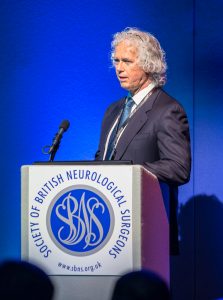 Professor Randall Chesnut, Director of Neurotrauma at the University of Washington, delivered the Sir Victor Horsley lecture. The concert hall was so full for Prof Chesnut’s talk that there was only standing-room when I arrived, and even found it difficult to get through the door. Prof Chesnut is evidently a very popular speaker, and after listening to his engaging presentation, it was clear to see why. The theme of the lecture was intracranial pressure (ICP) monitoring – standard practice in the management of patients with severe traumatic brain injury (sTBI). But a new theme quickly emerged: the importance of evidence based interventions. Prof Chesnut led the BEST-TRIPP trial, a randomised controlled trial (RCT) that compared two protocols for managing sTBI: treatment based on ICP monitoring and treatment based on imaging and clinical examination. The results of this study and significant comment can be found in the original paper. Prof Chesnut explained that the problem with research in this area is that we don’t have many Class I studies. We need Class I studies to infer causality, but he argued that we need to be able to connect all available evidence and integrate it into our web of knowledge. Having had a few set backs along the way in his research, Prof Chesnut declared, “Experience is what you get when you don’t get what you want!”
Professor Randall Chesnut, Director of Neurotrauma at the University of Washington, delivered the Sir Victor Horsley lecture. The concert hall was so full for Prof Chesnut’s talk that there was only standing-room when I arrived, and even found it difficult to get through the door. Prof Chesnut is evidently a very popular speaker, and after listening to his engaging presentation, it was clear to see why. The theme of the lecture was intracranial pressure (ICP) monitoring – standard practice in the management of patients with severe traumatic brain injury (sTBI). But a new theme quickly emerged: the importance of evidence based interventions. Prof Chesnut led the BEST-TRIPP trial, a randomised controlled trial (RCT) that compared two protocols for managing sTBI: treatment based on ICP monitoring and treatment based on imaging and clinical examination. The results of this study and significant comment can be found in the original paper. Prof Chesnut explained that the problem with research in this area is that we don’t have many Class I studies. We need Class I studies to infer causality, but he argued that we need to be able to connect all available evidence and integrate it into our web of knowledge. Having had a few set backs along the way in his research, Prof Chesnut declared, “Experience is what you get when you don’t get what you want!”
Professor Chris Ham, Chair of The King’s Fund, presented the Sir Geoffrey Jefferson lecture. The lecture focused on the uncertain future of the National Health Service (NHS). Prof Ham displayed a poll of public opinion which showed that the NHS remains the thing that makes people most proud to be British. It ranked higher than other British symbols, such as Team GB in the 2012 Olympic Games, the BBC, and well above the Houses of Parliament. He further explained that this should be a warning to politicians, who are only ever its temporary custodians, to take good care of it.
Professor Philippe Coubes, Consultant Neurosurgeon at Montepelier University Hospital (France), delivered The Hugh Cairns lecture, in which he discussed the management of dystonia-dyskinesia syndromes – neurological movement disorders. Prof Coubes specialises in Functional Neurosurgery and uses deep brain stimulation to treat dystonia in some patients, which involves the implantation of electrodes to deliver electrical stimulation to specific areas of the brain to interrupt abnormal signals. Prof Coubes showed us videos of his patients – children with severe dystonia, before and after surgery. In some patients, the condition was so severe they were unable to walk unassisted. It was incredible to see these children post-surgery walking confidently down the hospital corridor. However, Prof Coubes cautioned that while these were his success stories, there have also been failures, and there is still a long way to go in terms of research and refinement.
The Next Generation
As a medical student at a specialty-specific event, I knew I would be in the minority, but it was encouraging to see a number of students presenting research at SBNS Newcastle. The student presentations also raised some interesting debates during the Q&As. Saffwan Mohamed, a final year medical student at the University of Liverpool, presented on complications of anterior cervical disc fusion for brachialgia. During the Q&A, a delegate asked, “You included wound pain in your list of complications; is that really a complication?” Saffwan stopped to think for a moment and then said, “Well it matters to the patient, so I guess it is.” This raised an interesting debate about what a complication actually is, with some delegates concluding that they didn’t know the answer to this interesting question, but suggesting we should give patients a detailed account of what they may experience post-op so they are fully prepared.
Justin Ng, a final year medical student from HYMS, presented his audit on a cloud-based electronic referral system vs. telephone referrals in neurosurgical emergency admissions. His results showed, in telephone referral, the referring team was missing just over a quarter of management steps and that e-referral could facilitate greater adherence to management instructions. Likewise, this presentation stimulated a debate on the merits of each method. Some delegates noted that the uptake of e-referral at their units had been less successful, or that they preferred the human interaction of a phone call. However, given Justin’s statistically significant positive evidence for e-referral, its efficiency (since its introduction the time from referral to a consultant opinion has dropped from nearly an hour to less than 10 minutes), and the ease of use, it is likely that successful units, such as Hull, will become the ‘gold-standard’. They can look forward to being used as a model for further progress in this area, as neurosurgeons continue to integrate modern technology in their practice.
Many consultants had come along to support their students and junior colleagues during the presentations. Some were even eager to assist in the Q&As. This wholehearted support for the next generation was wonderful to witness.
The Community
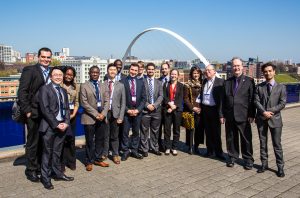 One of the best things about attending an SBNS meeting is the people you meet: consultants, trainees, students, physiotherapists, nurses, scientists, and industry representatives. There was a refreshing spirit of friendship and community at SBNS Newcastle, which showcased a myriad of excellent research as well as dynamic people dedicated to their profession.
One of the best things about attending an SBNS meeting is the people you meet: consultants, trainees, students, physiotherapists, nurses, scientists, and industry representatives. There was a refreshing spirit of friendship and community at SBNS Newcastle, which showcased a myriad of excellent research as well as dynamic people dedicated to their profession.
Thank you to:
Mr Richard Kerr, SBNS President, for kindly inviting me. Mr Paul May, SBNS President Elect, for making me feel so welcome.
Suzanne Murray, SBNS Senior Administrator, and Alix Gordan, SBNS Administrator, for organising such a brilliant event.
Special thanks to John Murray for the use of his photos. All photos used in this post credited to John Murray – PNJ photography www.pnjphotography.com
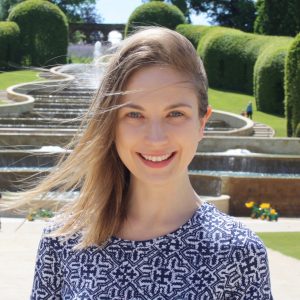 Alexandra Abel is a medical student at HYMS. In her spare time she enjoys reading, writing, and ukulele playing. Join her on Twitter @alexandraabel.
Alexandra Abel is a medical student at HYMS. In her spare time she enjoys reading, writing, and ukulele playing. Join her on Twitter @alexandraabel.

